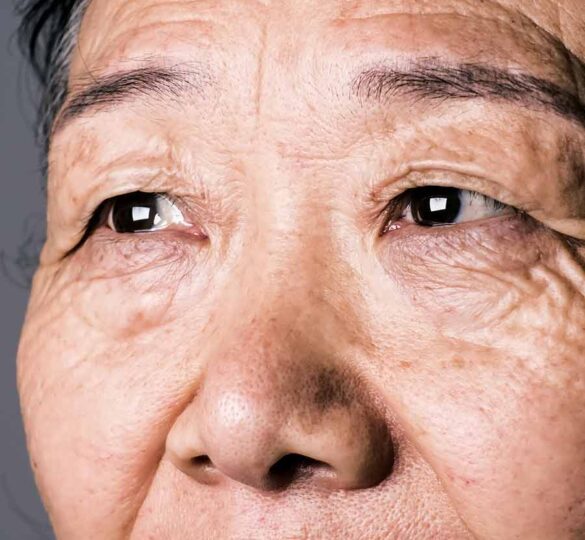Low Vision Tips for Living with Glaucoma
If you or someone close to you has low vision due to glaucoma or another eye disease, here are some simple tips to help continue living an active daily life.

The effect of glaucoma on vision depends on the severity of the disease. In early or mild glaucoma, there may be no vision problems at all, whereas, in severe glaucoma, there may be partial or complete loss of vision.
Many people with glaucoma have good vision when they are tested with a vision chart but still experience problems such as difficulty seeing in dim lighting and not being able to distinguish different shades of the same color. A low vision specialist can provide valuable guidance when you have any degree of visual impairment.
Here are some practical tips that can help you adjust to the visual difficulties caused by glaucoma:
Improve Task Lighting — Add additional light for specific tasks such as reading. Use directed lighting from behind the shoulder to reduce glare.
Increase Contrast — Pour your coffee into a white cup, and your cereal into a dark bowl. Set white plates on dark place mats. Use a black cutting board for white onions and a white cutting board for dark-colored foods. Use felt tip pens instead of ball point pens.
Control Glare — Wear amber or dark yellow glasses or clip-ons to reduce glare, and wear a cap with a brim or a visor outside. Cover shiny surfaces with a cloth.
Get Organized — Always keep your money, keys, and medications in the same place to make them easier to find. Have a designated place for everything in your home, and request that others in the household respect and maintain the organizational system.
Enlarge Text — Request large-size checks from your bank. Use large print crossword puzzles and playing cards. Photocopy and enlarge favorite recipes, addresses, and take-out menus. Use the accessibility features on Apple devices, Macintosh and Windows computers.
Install Additional Lighting — People with glaucoma often have trouble adjusting to darkness or darkened rooms. Install additional lighting to increase illumination in dark closets or hallways. When outdoors at night, carry a strong flashlight.
Avoid Extra Floor Coverings — Area rugs can sometimes pose a hazard for people with low vision. Keep home pathways and work areas free of extra floor coverings.
Mark Stair Treads and Handrails — Loss of peripheral vision and reduced contrast sensitivity can make it challenging to see steps and stairways. Marking treads and handrails with contrasting colored paint or tape can help improve navigation and reduce the risk of falling.
Keep Cabinets Closed — Get into the habit of consistently closing kitchen and bathroom cabinets, especially those above countertops. It can also help to make sure doors are either all the way open or shut. These safety techniques can significantly reduce the risk of head injury.
Take Care When Reaching Down — Before you reach down to pick up a dropped object, place your hand, palm out, about 12 inches in front of your face to make sure you don’t hit the edges of tables or countertops with your forehead.
Mark and Label — Mark key positions on your stove, microwave oven, washing machine, and thermostat with dimensional fabric paint or nail polish so you can feel the correct positions. Label spices and medications with a dark marking pen. Carry your address labels with you to use when filling out forms.
Listen to Books — Listen to audio tapes and books on CD borrowed from your local library, or from the free Talking Books program sponsored by the National Library Service.
You may also consider visiting a low vision specialist who can help you. Getting organized and being diligent about everyday safety tips can help you to maintain your independence while living with glaucoma.
Last reviewed on December 19, 2022